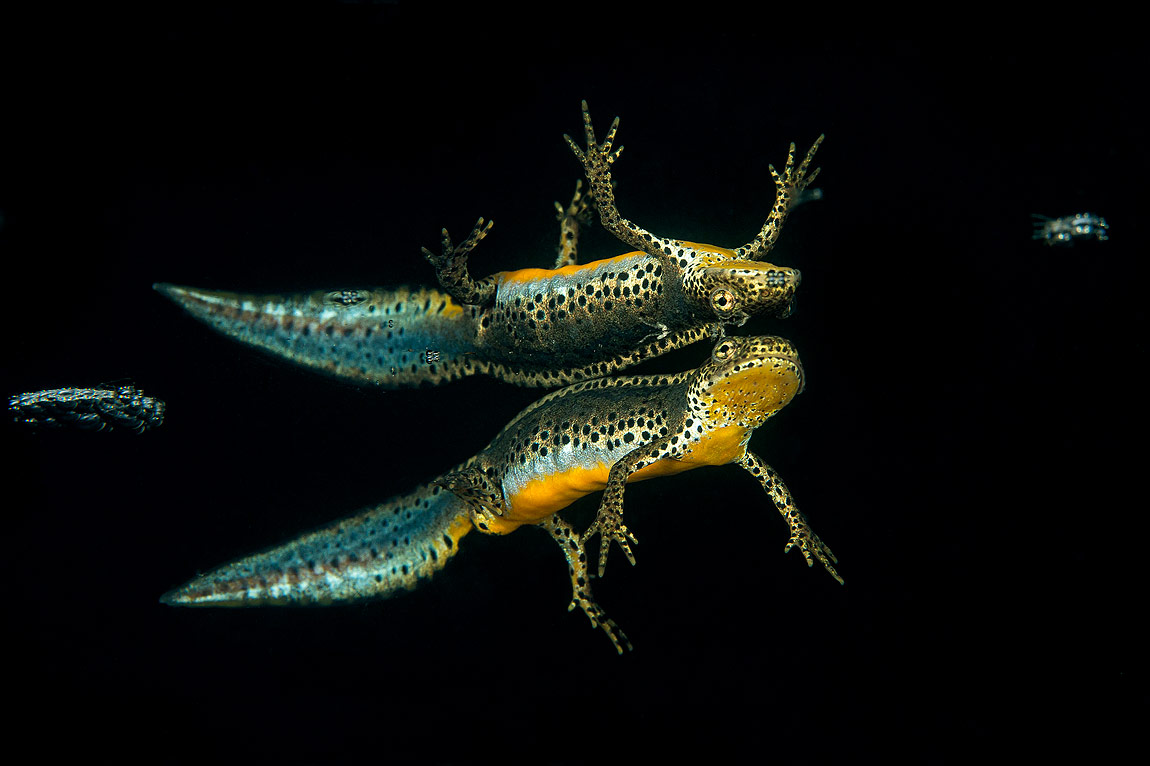The alpine newt (Ichthyosaura alpestris), formerly (Triturus alpestris), occurs at high altitudes as well as in the lowlands. Living mainly in forested land habitats for most of the year, Alpine newts are usually semiaquatic, spending most of the year (9–10 months) on land and only returning to the water for breeding.
Adults measure 7–12 cm and are usually dark grey to blue on the back and sides, with an orange belly and throat. Males like the one in the picture are more conspicuously coloured than the drab females, especially during breeding season.
Populations of the alpine newt started to diverge around 20 million years ago. Alpine newt populations are decreasing and have locally gone extinct. The main threats are habitat destruction, pollution and the introduction of fish such as trout into breeding sites.


